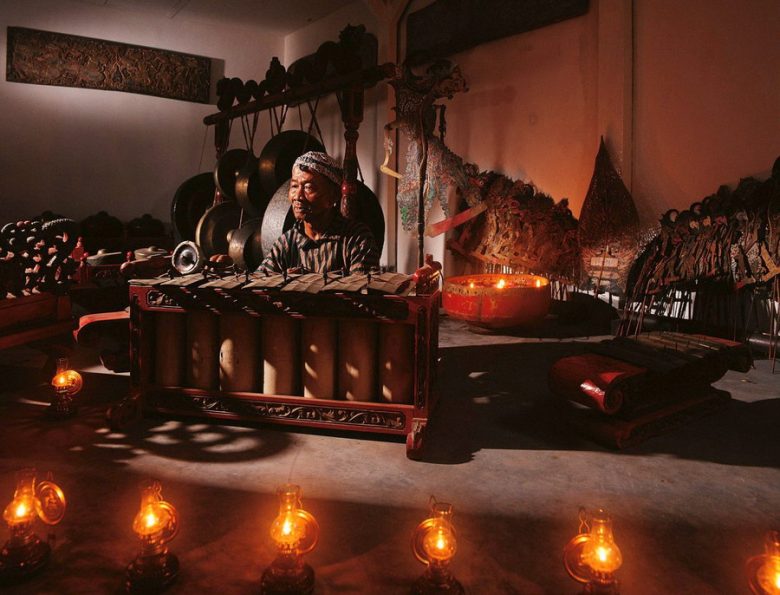Wayang is Indonesia’s puppet theatre art that is probably the best representation of Indonesian performing art, and are renowned for its elaborate figurines and complex musical styles. This ancient form of storytelling used to be found in many parts of Indonesia, but now, is also a dying tradition that is becoming difficult to find. For centuries wayang flourished at the royal courts of Java and Bali as well as in rural areas; with two most popular ones called Wayang Kulit (shadow puppets made of leather) and Wayang Golek (wooden rod puppets). Additionally there are several other forms of wayang – Wayang Wong (performed by human beings), Wayang Gedog (performed by humans wearing masks), Wayang Karucil (similar to leather puppets but made of wood).
Wayang is performed by a master puppeteer (dalang) who manipulates the swivelling arms while singers and musicians play complex melodies to convey folktales, which ranges from more dramatic tales to comedy legends. The puppet master’s role is that even more complex than a symphony orchestra conductor; he must be a master musician, an epic storyteller, a comic wonder and a deep philosopher. Moreover, he must be also a political pundit, as many wayang performances are a satire to criticize or make fun of current political situation and its modern-day leaders. Traditionally, the very good dalangs also have the power to do exorcisms and other traditional ceremonies.

You can find a complete set of Wayang Karucil wooden puppets at Hotel Tugu Bali, and many beautiful wayang kulit leather puppets across all Tugu properties in Malang, Blitar, Bali, Lombok, as well as at Tugu’s Jakarta restaurants.





